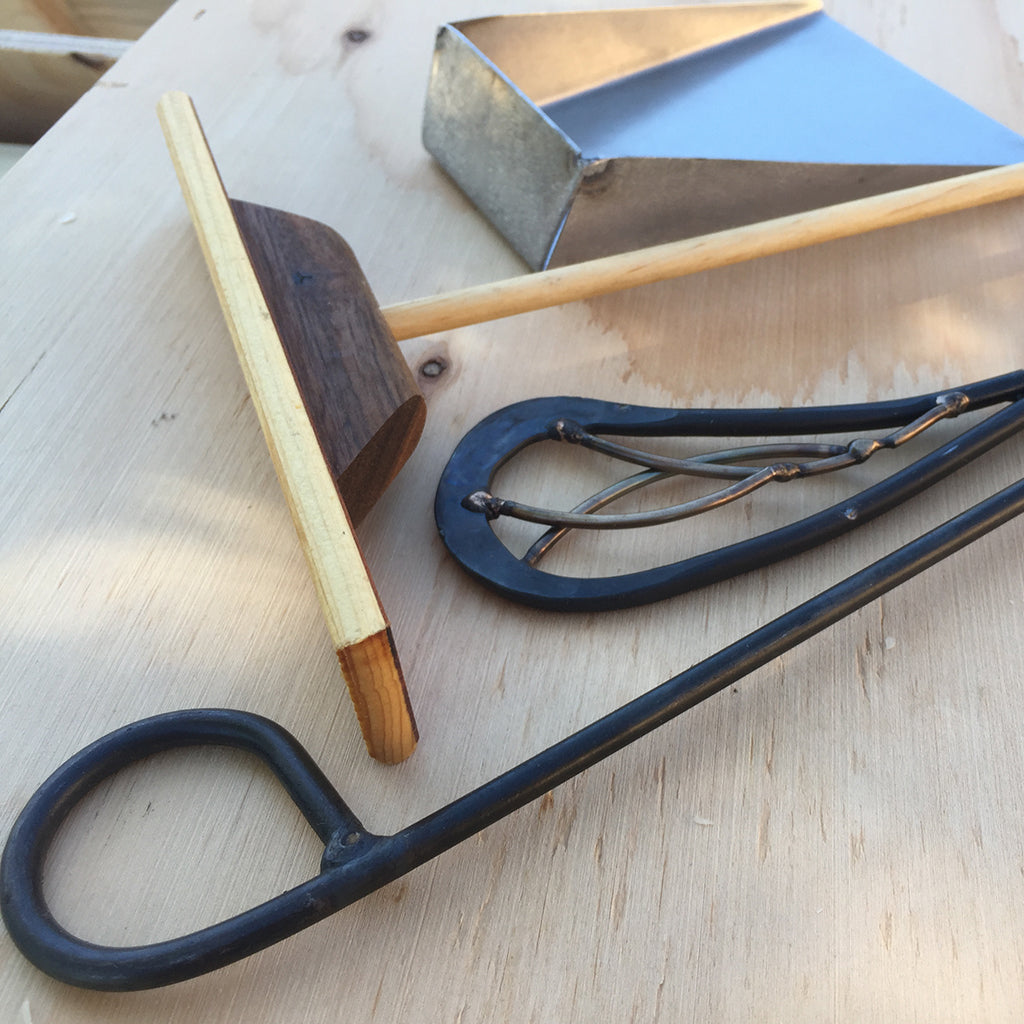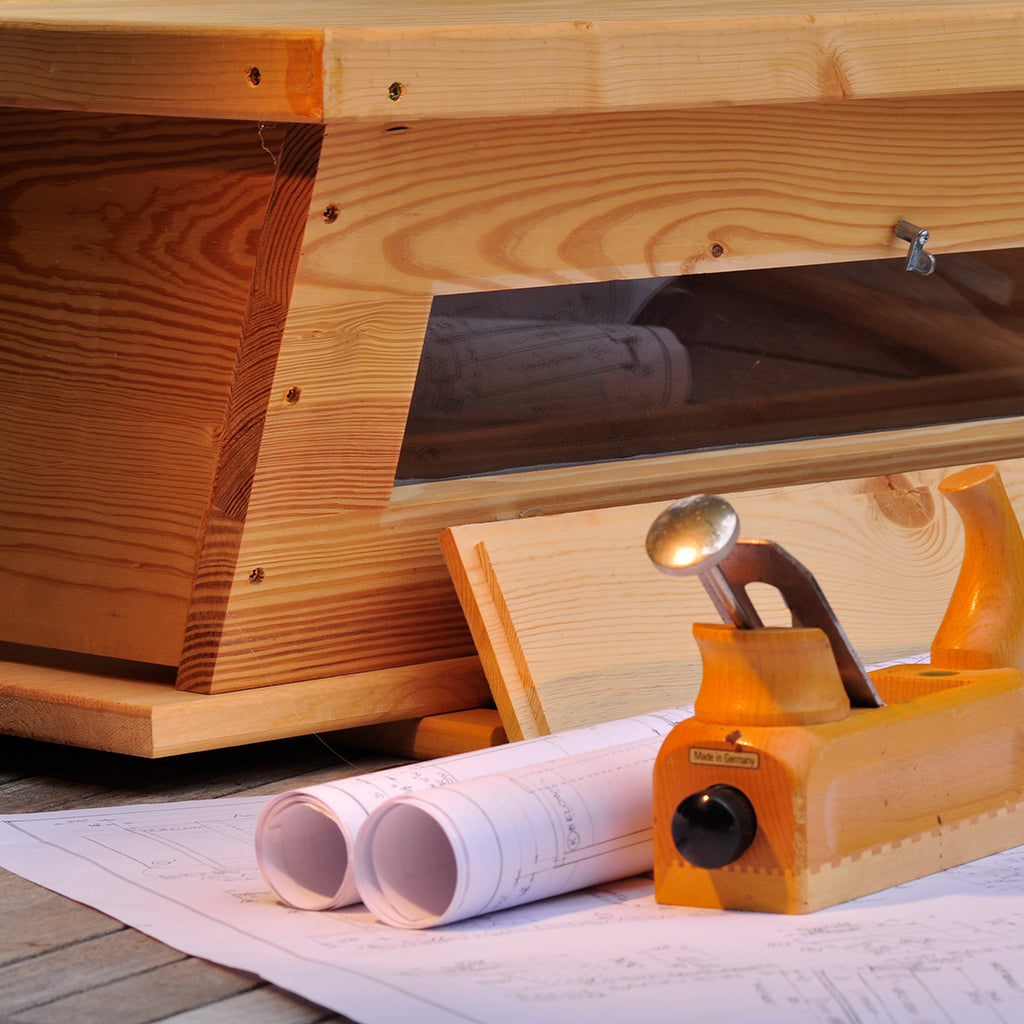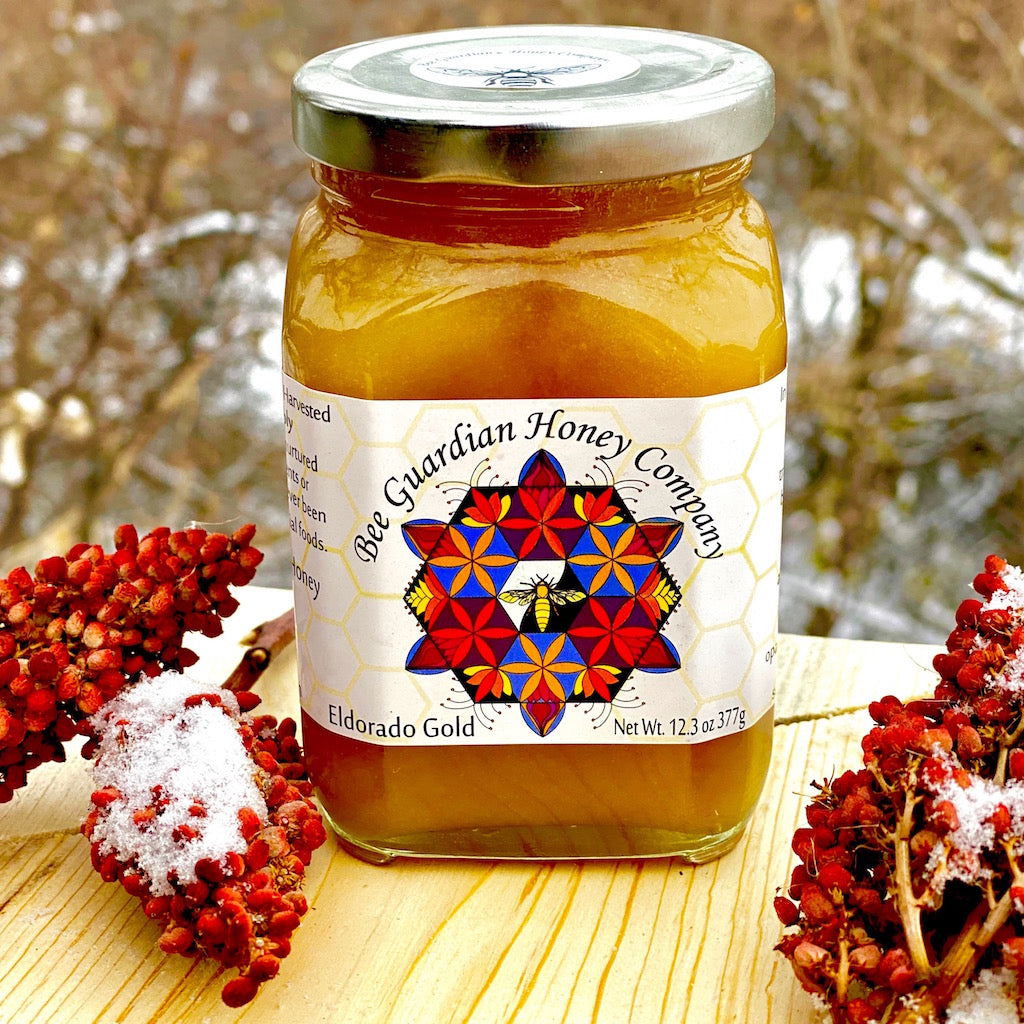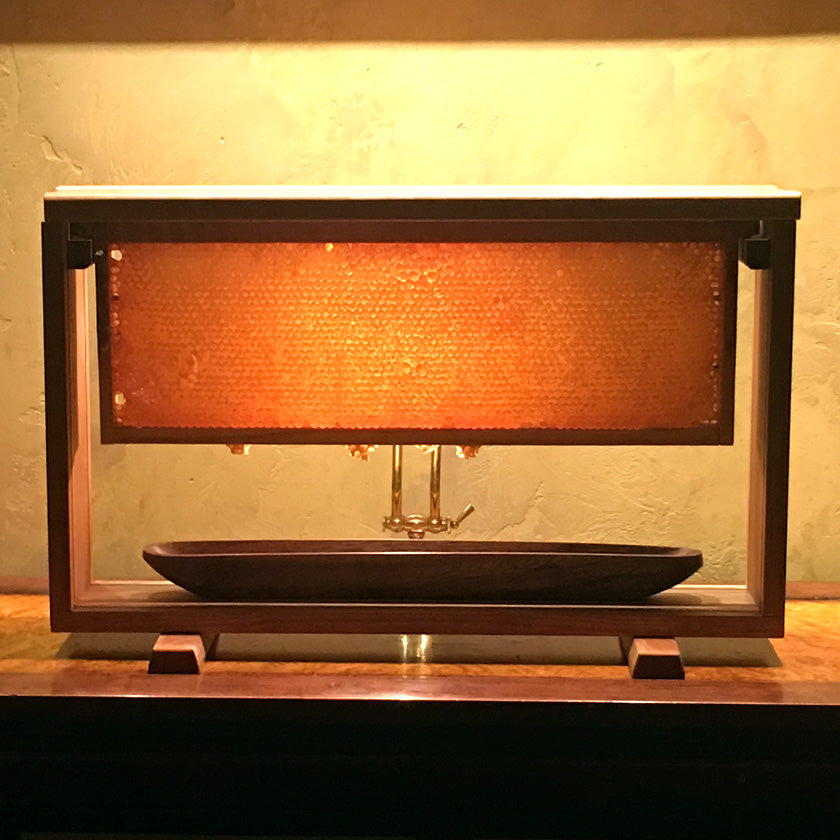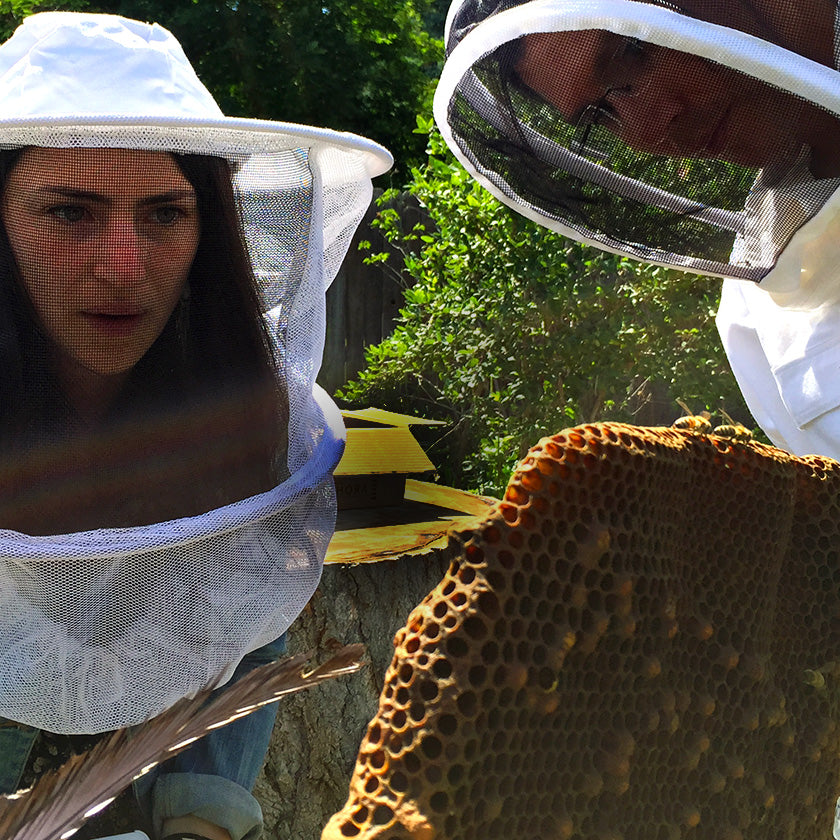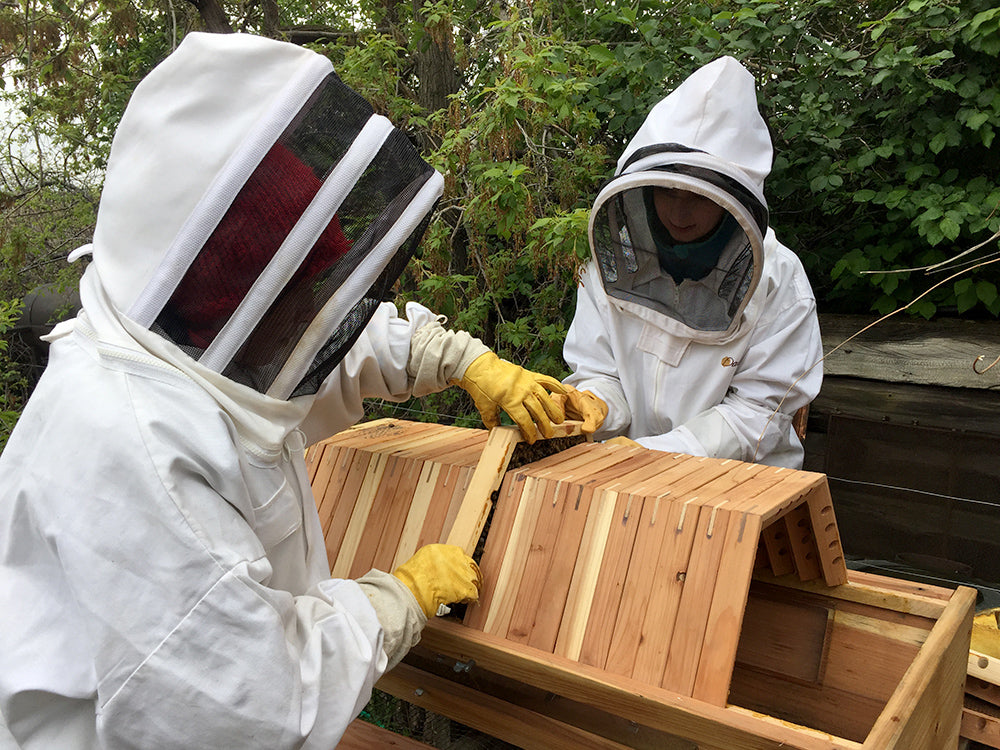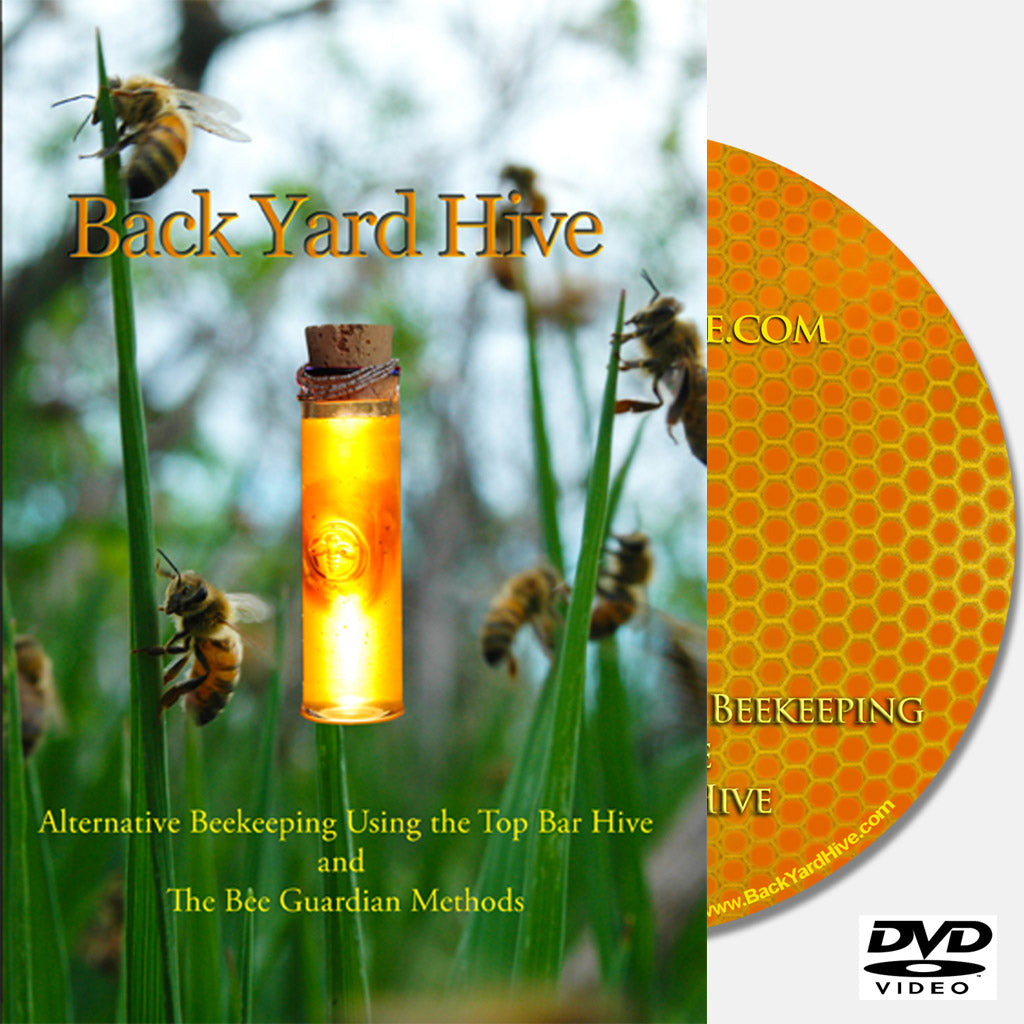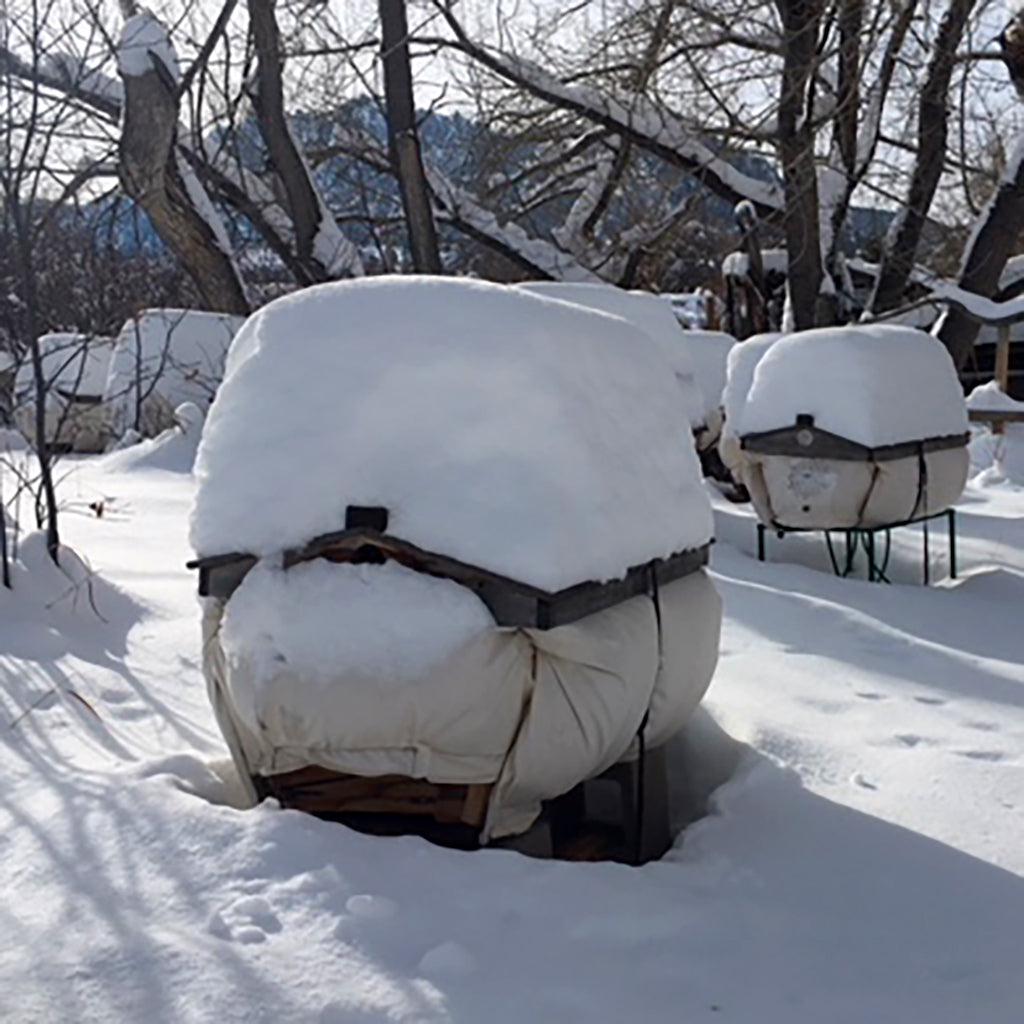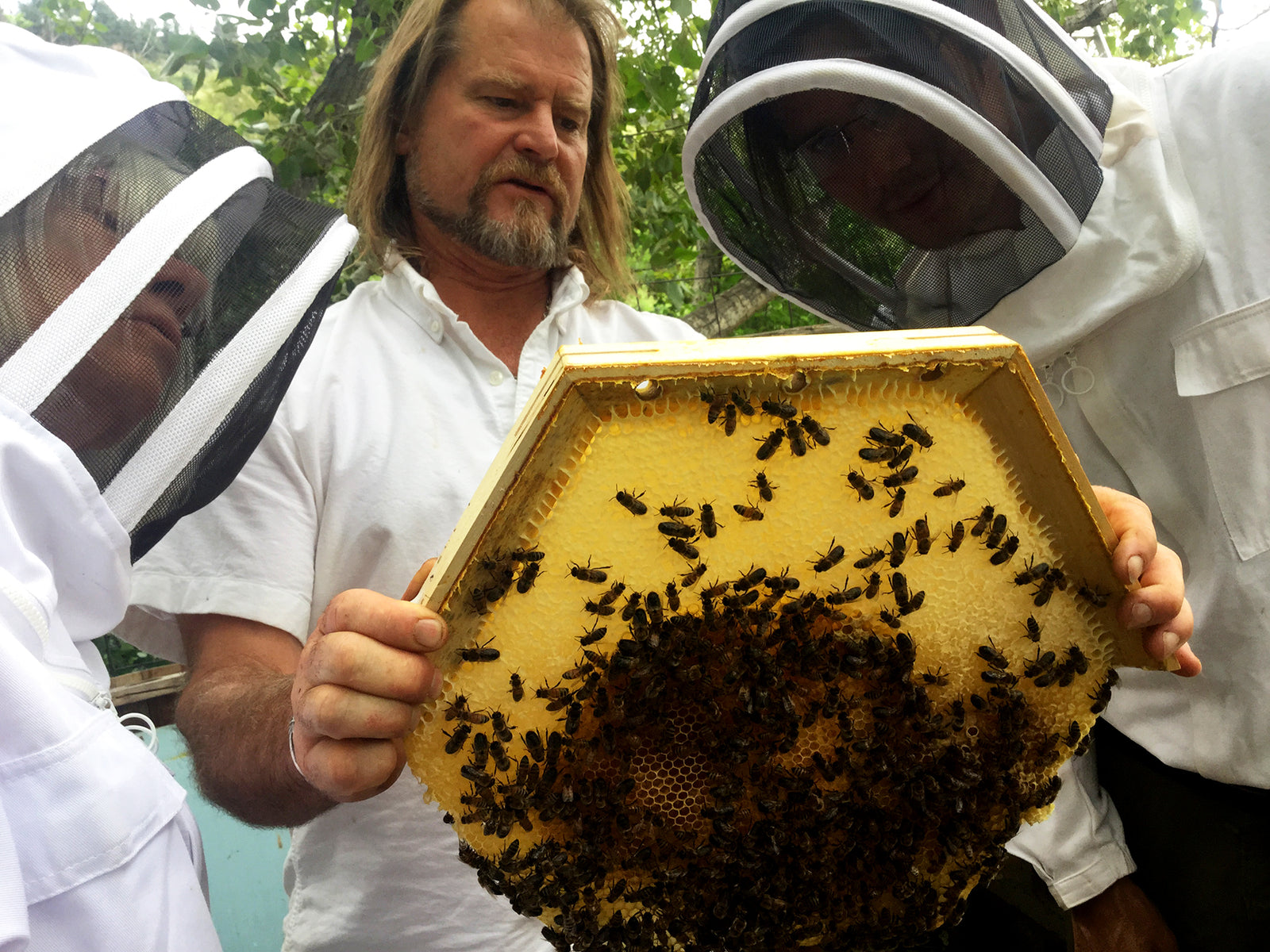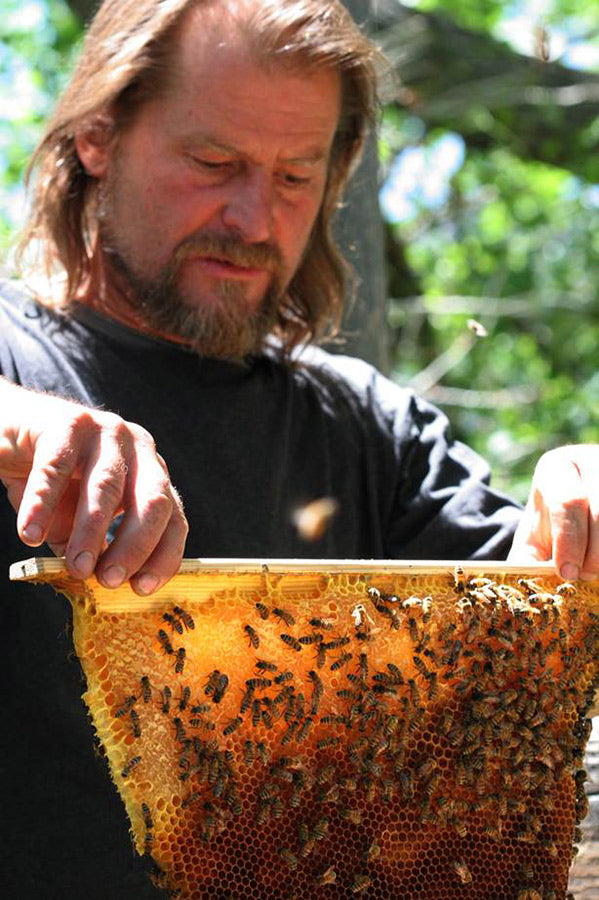The essential tools and equipment you will need to get started with your journey into Bee Guardianship
Hive Tool
Your hive tool is one of the essential pieces of beekeeping equipment you will need to work with your hive. Corwin designed a customized Hive Tool which works really well. This tool is used to pry the topbars gently apart when working the hive. It also slides between the comb and the wall of the hive enabling the beekeeper to unattach the comb from the walls. This tool is very nimble in the hive and enables the beekeepers' hand to be outside of the hive, thus minimizing the disturbance within.
Hive Scraper and Clean up Tool
Used to clean the sides of the hive and topbars
Honey Extractor
This is an expensive necessity for the Langstroth hive that is not required for the top bar hive. The combs harvested from a top bar hive are cut off in a bowl, mashed and put in a mesh strainer draped in a five gallon bucket. The honey drips out into a five gallon bucket and is ready to put in jars. You can put a plastic tap into the side of the five gallon bucket to fill the jars more easily.
I really enjoy harvesting one comb at a time during the summer. This method is very quick and gives the best sample of the different honey produced from the various flower blooms. I cover this approach in an article "A Simple Harvest" on our Website.
Beeswax
You do need to get bee's wax to coat the triangular edge of the top bars. You can melt it and then brush it on, but its actually easier to simply rub the wax directly on the edge. We sell pure beeswax on our website. If you purchase it else where make sure it is bee's wax and not paraffin.
Miscellany
With the Langstroth Hive there are many tools and equipment that are simply not needed with a top bar hive. Queen excluder, mite screens, Supers, foundation, pesticides, fungucides, Superframes, HiveTopper Feeder, Medication Kit, Shallow Honey Super, bee brush, Frame Grip, Manipulating Cloth, Hive Strap, Frame Cleaner, Frame Runners, Castellated Spacers, Snelgrove Board just to name a few.
Bee Suit : Do I need Protective clothing?
This is your choice to use a beekeeper suit working with your hive. When you are just starting out beekeeping wearing protective gear will give you an added comfort when working with the bees. And it is one less thing to think about when working with the bees.
Whether or not you should wear a bee suit depends on your comfort level. Our suggestion is to start with maximum protection. Be mindful to move gently and smoothly without jarring the hive. Pay attention to the reaction you receive from the bees and be prepared to close the hive if the situation becomes too stressful. As you become more comfortable with your skill and the bees, you may begin to remove the protective gear as you feel appropriate.
There is no reason why you should feel stressed or nervous while tending to the bees. Bee-guardianship should be a fun and relaxing experience, so don’t push yourself beyond your limits.
Keep in mind that each bee colony has different attitudes. I have hives where the bees are very gentle and have never stung me, and others that are very defensive of their home. The particular mood of the moment, the time of day, and the time of year, are also variables. So, feel the energy of your hive, go in the hive before the heat of the day, in the later morning while many bees are out foraging, and try to stay out of the hive at dusk and in the fall.
You have many options for protective gear. We love using the new Bee Helmet and Veil. You can create your own unique outfit or purchase a half- or a full-bodied suit.
If you would rather not purchase a bee suit, you could start out with just a veil, leather gloves, long sleeves, and pants. You can tape the opening to your sleeves shut, as well as your pant cuffs. This will prevent bees from crawling into your clothes or shoes, and from stinging you on your face or hands. Or, if you are comfortable, this can be an outfit that you choose to work slowly toward, after starting with a more sting-proof option. As you feel comfortable you may play with removing gloves, and so on.
Keep in mind that because of the design of the top bar hive, the bees do not get as agitated and reactive as with working in the Langstroth hives. The top bar hive differs substantially from Lang hives in that there are not spaces between each frame that expose a large area to the outside. With the top bar hive, the bars are flush with each other and you will only expose a few inches to the open air. This design comfortably contains the bees, and from my experience, will keep them less reactive to your activity. Of course, if you breathe into the hive or if something jars the hive you still risk being stung.
So, deciding on your protective gear is up to you. Regardless of what you wear, you should work in the hive with the same awareness. Just make sure you enjoy your time with the bees, and stay in your comfort zone.
Do you need to use a smoker with a Top Bar Hive?
We don't use smokers; we don't feel it's healthy for the bees. The smoke is basically making the bees feel that there is a fire in the forest and that they have to gorge on honey and get ready to run. This is why the bees seem calmer, only because they are full of honey. The smoke actually stresses out the bees and makes them vulnerable to disease and the bees begin to associate the beekeeper with a smoking trauma.
Most of the people we have taught to work with top bar hives do not own a smoker. The beekeeper can perfect their technique when working the hive, and eventually be comfortable not using a smoker. When working with the bees, much depends on your timing (both the season and the time of day that you choose to work with them) and the personality of the bees. If you listen to the bees they should tell you when it's ok.
When working with the bees during a nice warm day, many of the bees will be out foraging so you’ll have less bees to "interrupt" when going into the hive. You do want to be careful it is not too hot of a day (like 90 degrees) as the comb will be very soft and can be more susceptible to falling off the top bar. The idea is to be calm -- move slowly and with care.
All this being said, if you are just getting started with bees, it is not the end of the world to lightly use smoke and it might make you feel more comfortable.


